Future Colorado Scientific Society Meetings
We normally hold monthly meetings from September through May.
Our meetings are both in-person and virtual.
Meetings are normally on the third Thursday of the month.
All are welcome – no admission charge
Join us at in-person after 6:30 pm for social time before the meeting
Join Zoom meetings after 6:45
Meeting and Program begin at 7:00
CSS May Meeting and Emmons Lecture
“The Consequences of the Compact Remains with Us”:
Challenges and Opportunities for the Colorado River Upper Basin
Thursday, May 15, 2025
Eric Kuhn, retired general manager of the Colorado River Water Conservation District
All are welcome – no admission charge
6:30 pm – Social time begins at Golden Calvary Episcopal Church. Enter off 14th St.
6:45 pm – Join Zoom meeting, if attending remotely
7:00 pm – Meeting starts.
Please arrive early. Church doors are locked, and no one will be at the door to let you in after 7:00 pm.
A link to Join the Zoom meeting will be posted here before the meeting.
The details about attending the meeting in person at the Golden Calvary Church follow the details about the talk.
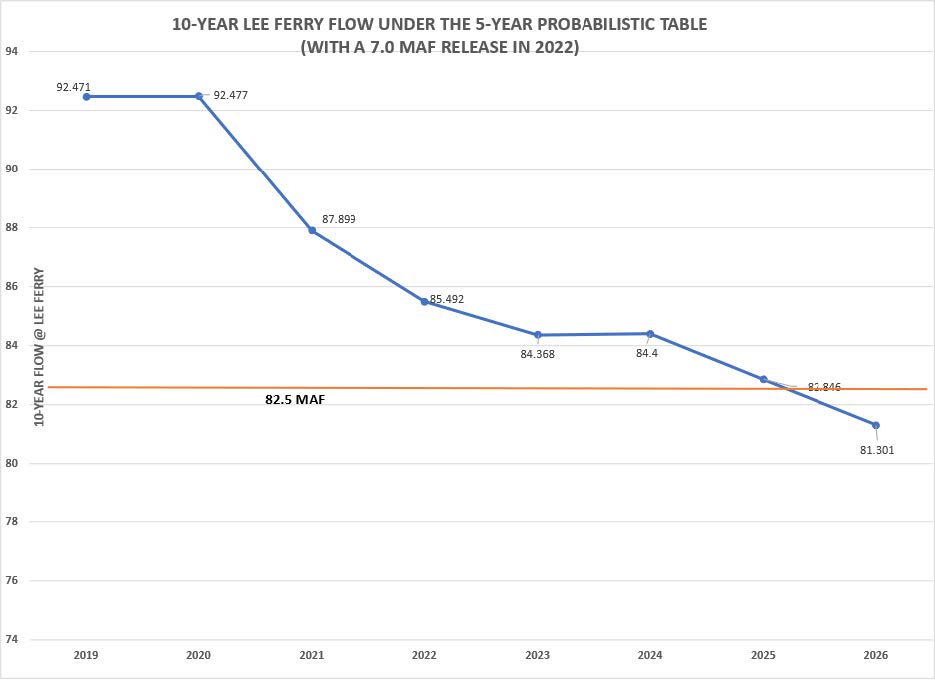
(With a 7.0 MAF Release in 2022)
Abstract:
Declining Colorado River flows are exposing critical ambiguities in the “Law of the River”, the interlocking set of Compacts, statutes, and court decisions that frame management of the river and the allocation of its waters. Perhaps most important among those is an apparent conflict between Article I of the Colorado River Compact, which calls for the “equitable division” of the river’s waters, and Article III, which is interpreted as creating a firm delivery obligation of water from the river’s Upper Basin to the Lower Basin. This apparent conflict has been papered over for decades with surplus water deliveries, but with climate change depleting the flow of the river, we are approaching a point where that is no longer possible, and a continuation of current practice would place the bulk of the burden of responding to climate change on the Upper Basin. That would hardly be “equitable”. We argue this places a burden on the Upper Basin to choose among a narrow set of paths forward – 1) continuing with the status quo in hopes of negotiating more favorable near-term rules, 2) taking a hard line with the attendant risk of litigation, or 3) seeking a more equitable long term agreement.
Keywords: Colorado River, Colorado River Compact, demand management, curtailment, Upper Basin obligations, water conservation
Download Science Be Dammed Working Paper Number 3, Kuhn, Eric and Fleck, John, from:
https://papers.ssrn.com/sol3/papers.cfm?abstract_id=4094375
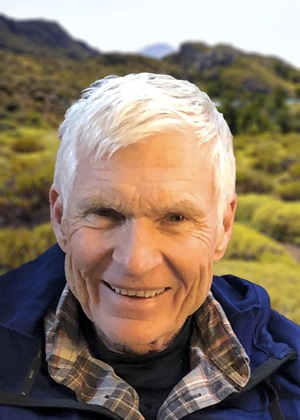
Biography: Eric Kuhn is the retired general manager of the Colorado River Water Conservation District and co-author with John Fleck of Science Be Dammed: How Ignoring Inconvenient Science Drained the Colorado River, University of Arizona Press, 2019.
The Colorado River District is the largest and oldest of Colorado’s four conservation districts. It covers most of the Colorado River Basin within Colorado. Almost two thirds of the flow at Lee Ferry originates in or flows through the district. Eric started employment with the Colorado River District in 1981 as Assistant Secretary-Engineer. In 1996 he was appointed General Manager, a position he held until his retirement in 2018.
From 1994 through 2001, he served on the Colorado Water Conservation Board representing the Colorado River mainstem. Eric served as an at-large representative on the Colorado Inter-basin Compact Committee, from 2005 – 2018. He also served on the Engineering Advisory Committee of the Upper Colorado River Compact Commission from 1982 -2019. Prior to working for the Colorado River District, he served as an engineer officer aboard nuclear submarines in the U.S. Navy and worked as a nuclear start-up engineer for Bechtel Power Corp. In addition to Science Be Dammed, a book about Colorado River hydrology and politics, Eric has authored or coauthored numerous other articles and papers about the Colorado River.
Research Interests: How climate change is impacting the operation of the major Colorado River system reservoirs and the rules and laws that govern Colorado River water use. How our understanding of the hydrology of the Colorado River has evolved with the law of the river.
In-person Meeting at Golden Calvary Church
All are welcome – no admission charge
6:30 pm – Social time begins at Golden Calvary Episcopal Church. Enter off 14th St.
6:45 pm – Join Zoom meeting, if attending remotely
7:00 PM – Meeting starts.
Please arrive early. Church doors are locked, and no one will be at the door to let you in after 7:00 pm.
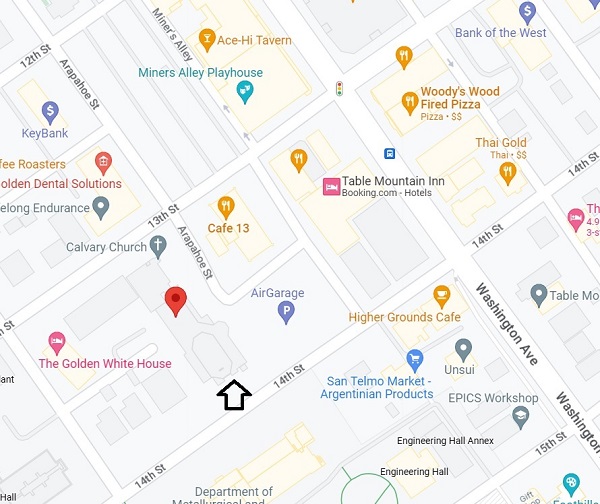
1320 Arapahoe St, Golden, CO 80401
Click on link to open a Google map.
Enter off 14th St., going in via the main glass doors on 14th St.
Do not enter the old church above 13th St.
Go through building following the CSS signs to the Community Rooms 1 and 2, where we meet.
The church doors must stay locked, and we will have a person to let you in at the doors off 14th st.
They want to see the presentation too, so please arrive before 7:00 pm.
There will be a phone number that you can text to be let in if you arrive late.
Parking
On street parking is available close by, west of Washington Ave in downtown Golden.
The AirGarage parking structure, which can be entered from Arapahoe St., is $3.00 for three hours.
Copies of The Geology of Boulder County by Raymond Bridge (2004) will be available for $20.
Past Presidents’ Dinner
Tarryall Valley: Gold, Glaciers, and Giants
Thursday, September 18, 2025
Mark Hanson
Mark Hanson is a geologist, historian, and author of the book Tarryall Gold: From Rush to Hush. He profiles the miners, mines, cabins, and their resulting patina on today’s Tarryall Valley. A resident and owner of several patented gold claims, Mark peels back 160 years of rust and reforestation to reveal a time capsule showcasing yesterday’s rush, and today’s hush.
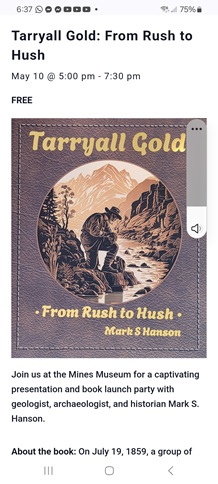
CSS October Meeting – Details to come
Thursday, October 16, 2025
Joel Gratz, Open Snow
Open Snow is a weather forecasting and snow conditions information service.
CSS November Meeting – Posters and Lightning Talks by Early Career and Student Earth Scientists
Thursday, November 20, 2025
CSS December Potluck, Business Meeting, and Past President’s Address
Whiskeytown boulder sampling to elucidate wildfire history and role in debris flows using luminescence
Thursday, December 11, 2025
Shannon Mahan, U. S. Geological Survey
Please pay your CSS dues for 2025!
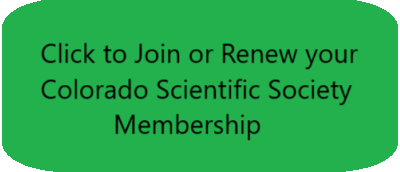
Membership dues paid in November and December also apply to the following year.
You may pay dues online, or print out a PDF of the membership form and mail it to us with a check. Continuing your membership in CSS will enable us to continue all our ongoing programs, including our field trips, virtual meetings, Student Research Grants, and more.
See Membership and Donations for our online membership payment form and the CSS Membership printable PDF.
Regular Membership – $25;
Student Membership – (any level) $5;
Life Membership – $395.
Send your membership payment, if not done through our online membership payment form, to Colorado Scientific Society P.O. Box 150495 Lakewood, CO 80215-0495.
Thank you!
Meetings are normally on the third Thursday of the month.
All are welcome – no admission charge
Join us at in-person after 6:30 pm for social time before the meeting
Join Zoom meetings after 6:45
Meeting and Program begin at 7:00
See Archives of CSS Talks – Indexed (under Events) for previous Colorado Scientific Society Talks, or just follow the link.
=
Calvary Episcopal Church in Golden – Details and Map
Golden Calvary Church,
Enter off 14th St. See arrow on Map
Click on link to open a Google map.

Calvary Church Golden
Click on link to open a Google map.
Enter from 14th St., go in by the main glass doors at [906] 14th St.
Do not enter via the old church above 13th St.
From the 14th Street entrance go down the hallway following Colo Sci Soc signs to Community Rooms 1 and 2, where we meet.
The church doors must stay locked, and we will have a person to let you in at the doors off 14th st.
They want to see the presentation too, so please arrive before 7:00 pm.
There will be a phone number that you can text to be let in if you arrive late.
Parking
On street parking is usually available close by, along 14th St and west of Washington Ave in Golden.
The AirGarage parking structure, which can be entered from Arapahoe St., is $3.00 for three hours.

